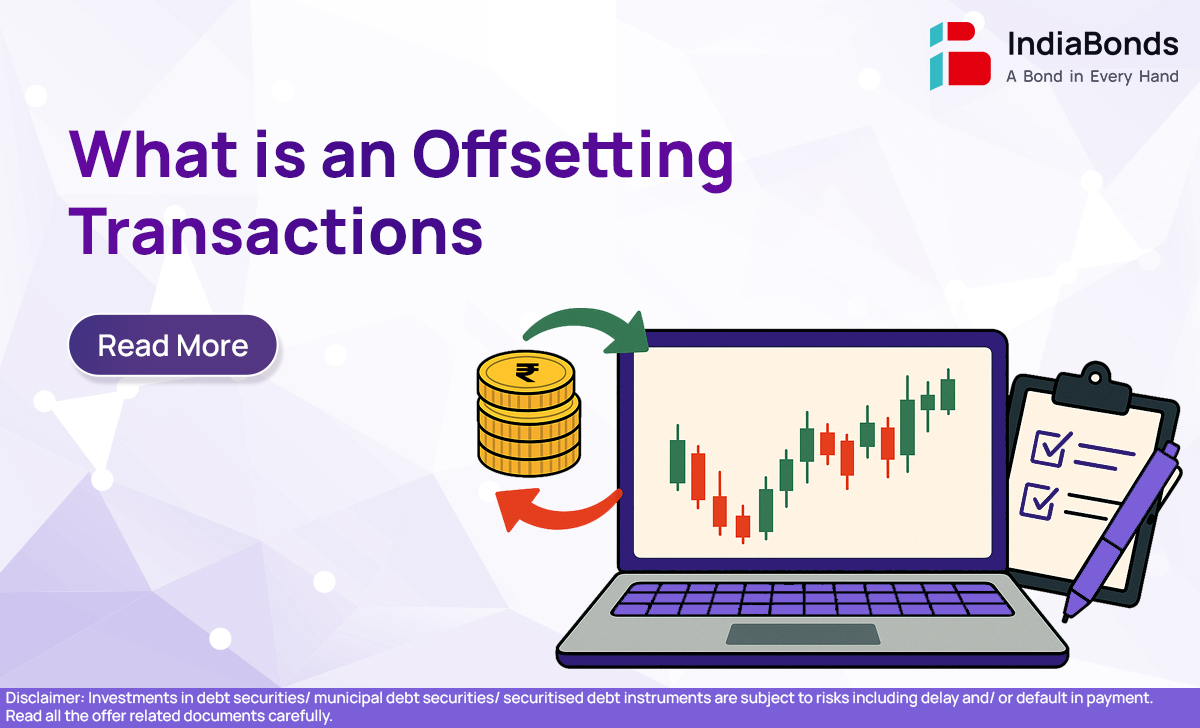What is an Offsetting Transactions?

Ever changed your mind mid-way through something and wished you could hit “undo”? Well, in the world of trading and finance, there is something pretty close to an undo button — it’s called an offsetting transaction.
Whether you’re a trader trying to manage risk or just curious about how the markets really work behind the scenes, understanding what is offsetting transactions can help you make smarter decisions. Let’s break it down in a way that actually makes sense.
Offsetting Transactions – The Basics
So, what are offsetting transactions?
In simple words, they’re transactions that are designed to cancel out the effect of an earlier one. Imagine you bought something thinking the price will go up, but later change your mind — instead of selling it outright, you take an opposite position to “balance it out.” That’s offsetting.
This technique is super common in trading, especially in futures and options markets. It’s also used in accounting, where companies balance out one financial entry with another to reflect the real picture of what’s going on.
How Offsetting Works – In Trading and Accounting
Let’s look at both worlds:
In trading, offsetting is all about risk management. Say you bought a futures contract on crude oil, hoping prices will rise. But now, you’re worried they won’t. Instead of waiting and praying, you sell a matching contract. Boom — the exposure is neutralized. That’s an offsetting move.
In accounting, the idea is similar but a bit more on the books. For instance, if your company owes ₹50,000 but is also owed ₹50,000 by the same client, you can “offset” the two transactions. It shows the net result — zero — instead of listing both as separate items.
Where Are Offsetting Transactions Commonly Used?
Offsetting isn’t just a fancy finance trick — it’s used practically everywhere:
- Trading and Investing: To limit losses or lock in profits.
- Hedging Strategies: When someone wants to protect their portfolio from market swings.
- Tax Planning: Offsets can help time gains or losses smartly.
- Corporate Accounting: To simplify financial statements and avoid duplication.
In short, if money’s moving, there’s probably some form of offsetting happening behind the scenes.
Examples of Offsetting in Futures & Options
Let’s bring this to life with a few examples:
- Futures Example:
You buy a futures contract on gold, expecting prices to go up. A few days later, things aren’t looking great. Rather than hold it and risk more losses, you sell a similar contract. This sell order offsets your earlier buy. - Options Example:
You buy a call option on a stock. But before the expiry, you feel the stock might not move. So, you sell the same call option. This is again an offsetting transaction — you’re exiting without waiting for the option to expire or be exercised.
Why Traders and Businesses Use Offsetting Transactions
Offsetting transactions come with a bunch of benefits:
- Flexibility – They give you more ways to exit a position, especially in volatile markets.
- Risk Control – Perfect for managing your exposure without panic-selling.
- Simplified Accounting – Makes financial statements clearer and neater.
- Better Tax Planning – You can strategically realize gains or losses.
What Are the Downsides?
While offsetting can be a lifesaver, it’s not always perfect:
- Not Always a Perfect Match – Sometimes, the offsetting trade isn’t available at the same price or time.
- Additional Costs – You might end up paying more in brokerage or taxes.
- Complex Tax Rules – Certain offset strategies can complicate your tax filing, especially under “wash sale” rules.
Tax Implications of Offset Transactions
Offsetting a transaction can count as a gain or a loss, depending on the timing and value. That means it can trigger a taxable event — even if you didn’t technically sell the original asset. It’s smart to speak with a tax advisor before using offsets for tax-saving purposes.
Offsetting vs Closing Position – What’s the Difference?
This is where many people get confused: Offsetting vs Closing Position.
- Offsetting a transaction means opening a new trade that cancels out the original one.
- Closing a position means you’re directly exiting — for example, selling a stock you had bought earlier.
You can think of offsetting as balancing a position, while closing is ending it.
Summary & Best Practices
Offsetting transactions are a key part of managing financial positions smartly — in both trading and business accounting. If used wisely, they can protect you from risk, simplify your books, and even offer tax benefits.
Best Practices:
- Always understand your exposure before placing an offset.
- Don’t offset blindly — make sure the trade aligns with your strategy.
- Keep clean records for every offsetting move.
- If you’re unsure about the tax part, get expert advice.
FAQs
1. What is an offsetting transaction?
It’s a transaction that reverses or neutralizes the impact of an earlier one — commonly used to manage risk or simplify financial records.
2. What does it mean to offset a transaction?
It means taking an opposite position to reduce or eliminate exposure from a previous transaction.
3. What is an example of an offsetting transaction?
Buying a futures contract and then selling an identical one to cancel out the position.
4. What is an example of offsetting?
In accounting, offsetting a ₹10,000 receivable with a ₹10,000 payable from the same party to show a net zero balance.
If you’re someone who deals with trades or manages books, understanding offsetting transactions can be a game-changer. It’s like the reset button you didn’t know you had — and when used right, it can really work in your favor.
Disclaimer : Investments in debt securities/ municipal debt securities/ securitised debt instruments are subject to risks including delay and/ or default in payment. Read all the offer related documents carefully.
































